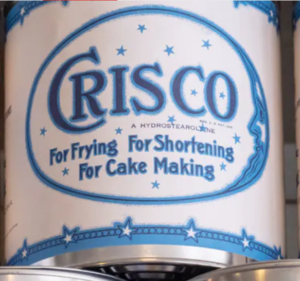How Crisco toppled lard – and made Americans believers in industrial food
December 18, 2019 8.49am EST
Author – Helen Zoe Veit

Perhaps you’ll unearth a can of Crisco for the holiday baking season. If so, you’ll be one of millions of Americans who have, for generations, used it to make cookies, cakes, pie crusts and more.
But for all Crisco’s popularity, what exactly is that thick, white substance in the can?
If you’re not sure, you’re not alone.
For decades, Crisco had only one ingredient, cottonseed oil. But most consumers never knew that. That ignorance was no accident.
A century ago, Crisco’s marketers pioneered revolutionary advertising techniques that encouraged consumers not to worry about ingredients and instead to put their trust in reliable brands. It was a successful strategy that other companies would eventually copy.
Lard gets some competition
For most of the 19th century, cotton seeds were a nuisance. When cotton gins combed the South’s ballooning cotton harvests to produce clean fiber, they left mountains of seeds behind. Early attempts to mill those seeds resulted in oil that was unappealingly dark and smelly. Many farmers just let their piles of cottonseed rot.
It was only after a chemist named David Wesson pioneered industrial bleaching and deodorizing techniques in the late 19th century that cottonseed oil became clear, tasteless and neutral-smelling enough to appeal to consumers. Soon, companies were selling cottonseed oil by itself as a liquid or mixing it with animal fats to make cheap, solid shortenings, sold in pails to resemble lard. MORE